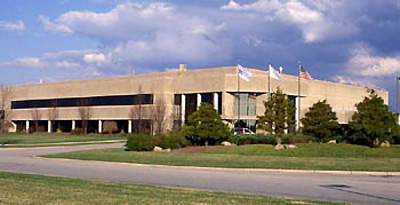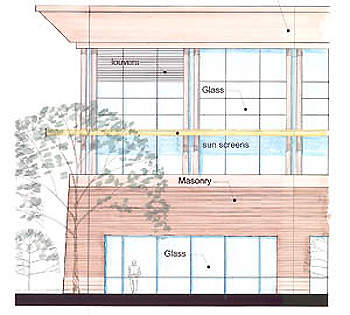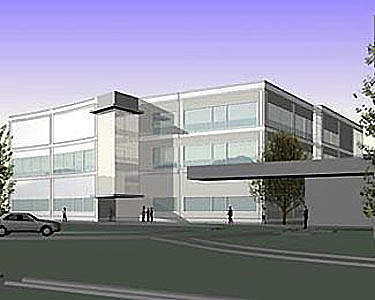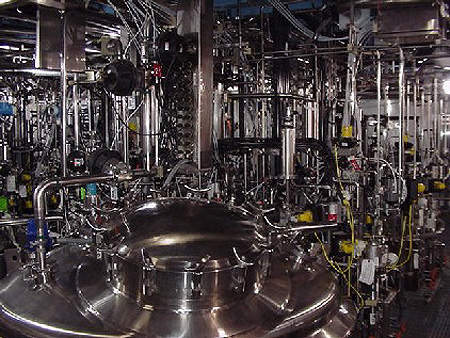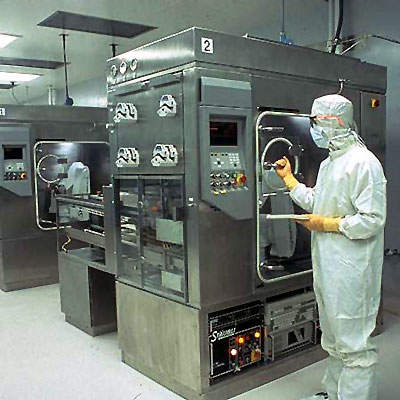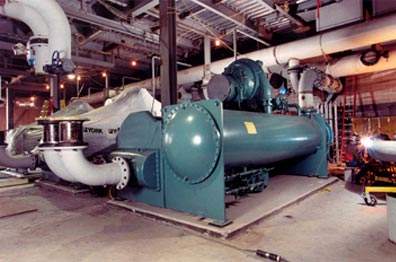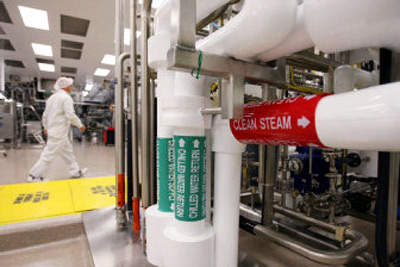West Greenwich, Rhode Island, US, is the site of a new pharmaceutical manufacturing facility dedicated to the production of Immunex’s rheumatoid arthritis drug, Enbrel. Although the continuation of the project was briefly put in doubt when the takeover of Immunex by Amgen was proposed, the continuation of construction was one of the conditions of the deal.
The completed pharmaceutical plant is now one of the biggest mammalian protein manufacturing plants in the world. The project involved the retrofit of an existing facility (BioNow project), and the construction of an entirely new manufacturing plant as well (the BioNext project). Both plants use Immunex’s T1 Enhanced Process developed by the Immunex Process Science Group.
HARD TIMES FOR AMGEN
In March 2007 Amgen announced that there were problems with two of its drugs: Epogen and Aranesp are both erythropoiesis-stimulating agents (ESAs) that are used to treat chemotherapy-induced anaemia among other conditions. Studies indicated that patients taking the drugs to attain higher haemoglobin levels were more likely to suffer from serious cardiovascular events.
Amgen suffered from a sharp decline in sales for its ESA medications that resulted in a serious drop in profits and a slump in sales even for the very successful arthritis drug Enbrel. These problems have led to Amgen instigating a cost cutting programme which will see the laying off of 1,500 employees across all of its operation to cut costs by $1.9bn.
The effect on Rhode Island is the loss of 300 employees with the closure of the BioNow building (scheduled to close by the end of 2007). Originally there had been 450 redundancies planned at the Rhode Island facility but sales of Enbrel improved in the third quarter of 2007 to $821m up from $705m for the same period in 2006.
The ESA problems have been addressed by the commissioning of new clinical studies into safety and by an improvement in the warnings included with the two drugs Epogen and Aranesp. The BioNext plant is to be kept open to supply the market with Enbrel.
WATER DISPUTE
In 2005 a dispute arose between Amgen and Kent County Water Authority over the plant’s demand for water. At that time the plant was already using 500,000 gallons per day. Amgen wanted over 800,000 gallons per day for the plant and the authority said it could not be done.
The disagreement escalated and eventually in January 2006 the State passed a bill guaranteeing the water supply for the company and forcing Kent County water authority to back down. Amgen then had its engineers design and build a state-of-the-art wastewater recycling plant and also a water conservation system that has cut the plant’s water usage by 160,000 gallons per day.
BIONEXT PROJECT (NEW ENBREL MANUFACTURING PLANT)
The second stage of the project involved building a new manufacturing plant. The BioNext facility included a production building, a warehouse, a central utility plant (47,000ft²), and a quality laboratory. The area covered was 500,000ft², and the estimated cost was $500m.
The new facility houses nine bioreactors with a capacity of 20,000l each. This is about ten times the size of bioreactors currently used in most pharmaceutical manufacturing plants. The new manufacturing plant received FDA approval in a 2005 validation audit and is now in full production.
The BioNext plant employs 350 workers to give a total of 700 personnel employed on the site. Ground was broken for the BioNext project in November 2001. The project was executed in a fast track mode (33 months conceptual design through to mechanical completion) with extensive use of modularisation and off-site fabrication.
The plant is dedicated for human therapeutics production, including upstream and downstream processing. The facilities include media/buffer prep, inoculum prep, mammalian cell culture, harvest and purification.
WEST GREENWICH BIONEXT PLANT CONTRACTORS
Edward Rouse Architects designed the new pharmaceutical facility and Kvaerner Engineering and Contracting had a key role in designing and building it. Turner Construction was initially appointed as construction manager but was replaced in 2002 by Fluor.
Kinetics Group Inc was involved in the design and process engineering of the equipment skids and additional equipment in the facility. Other process equipment suppliers included: bioKinetics, a subsidiary of Alfa Laval, (process equipment design), Kinetics Modular Systems (smaller bioreactors – 3,000l and 15,000l – and the harvest module), Cascade Controls (automation, including Delta V installation), Tote Systems International (solids handling systems – media and buffer powder), and ITT Industries’ Pure-Flo Solutions Group (ultra hygienic valves and skids).
ADP Marshal (one of the BioNext project managers) and the 21st Century Labor Management Partnership were instrumental in setting up a successful Project Labour Agreement (PLA) for the construction project. E2 Engineers were the structural engineers for the construction of the QC laboratories.
PROJECT SPECIFICS
During conceptual design, bioKinetics used their K-TOPS software to model the new plant systems and were able to demonstrate that production goals could be met with only one harvest and purification train. They were also able to minimise the number of prep tanks and CIP skids by suggesting the use of pre-sterilised plastic bags.
Their knowledge of bioreactor design and construction allowed the elimination of over half of the I/O and piping found on similar equipment in the existing facility. These economies of design saved $100m in construction cost and reduced the project schedule by many months.
Ultra hygienic valves and skids from ITT Industries’ Pure-Flo Solutions Group were chosen for use in the manufacturing process. Over 3,000 Pure-Flo valves have been installed in the West Greenwich facility on the upstream side, ranging in size from 0.5in to 4in.
The valves have been used in dozens of cell culture applications throughout the seed and production bioreactor systems.
Downstream applications at the plant, such as ultra-filtration (UF), used traditional and custom zero-static valves with sizes ranging from 0.5in to 3in. In chromatography, PFSG 5-way chromatography valves, divert valves, by-pass valves and double block and vent valve blocks were used in critical control applications.
Over 500 PFSG valves, including the new ISG valve, were employed in cryogenic vessels, which are used to control freezing, thawing and storage of biological products in portable vessels. The ISG was selected due to its internal design, which minimises contact surfaces and hold up volumes.
RETROFITTED DRUG MANUFACTURING FACILITY
Immunex agreed to take over an existing manufacturing facility from American Home Products’ sub-division, Greenwich Holdings (BioNow project). The idea was that this facility would be retrofitted to produce biotech pharmaceutical products. The existing facility covers approximately 250,000ft² and is equipped with eight 8,000l bioreactors.
The retrofit involved the adoption of: 120 pieces of major equipment, 25 miles of pipe, 240 miles of electrical wire and 300t of heating and cooling ducts. The retrofitted Enbrel plant was completed in 2001 and validated for use in the production of Enbrel by the FDA in 2002. The total cost of the project was $225m.

